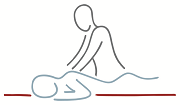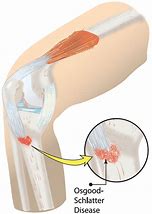In Osgood Schlatter’s disease (or syndrome), patients suffer from tenderness and swelling at the top of the shin bone around the attachment site of the patellar tendon. Pain is usually worse after activity involving running, kicking or jumping and often goes away with rest.
The most likely people to be affected by Osgood Schlatter’s disease are adolescents between the ages of 8 and 15 who lead active lifestyles and participate in regular sports. It is very rare in adults. Those undergoing a growth spurt are most at risk and boys are affected more than girls. The symptoms often last a few months and can come and go as the child grows.
Osgood-Schlatter’s disease is thought to be caused by the forceful contractions of the tendons and muscles around the knee, causing tiny fractures that lead to inflammation and pain. The body often responds by creating more bone, which results in a bump that forms under the knee at the top of the shin bone. This lump often remains for life.
Treatment for this condition includes:
Ice
Applying an ice pack at regular intervals to reduce the swelling and pain. No more than 20 minutes at a time with a barrier between the ice pack and skin.
Rest
Rest from repetitive movements like running and jumping until the pain is at an acceptable level. With people of this age group the Patient, Parent and Coach will all need to be involved in treatment discussions. Particularly if the problem appears during the competitive season.
Massage
Regular massage can relax the muscles surrounding the knee and reduce pain. Improved blood and lymph circulation after manual therapy can promote healing and reduce swelling.
Kinesiology Tape
Tape or a Compression Band may help to relieve pressure and swelling. It will support the knee whilst allowing movement and light exercise.
Strengthening Exercises
Strengthening all the muscles that support the knee (Quads, Hamstrings, Calves) can help to ease the pressure on the tendon. Specialist advice should be sought from a Sports Physiotherapist.
If you have any questions or want to discuss any minor sports injury, please get in touch.

